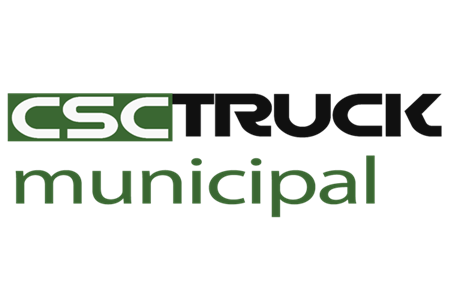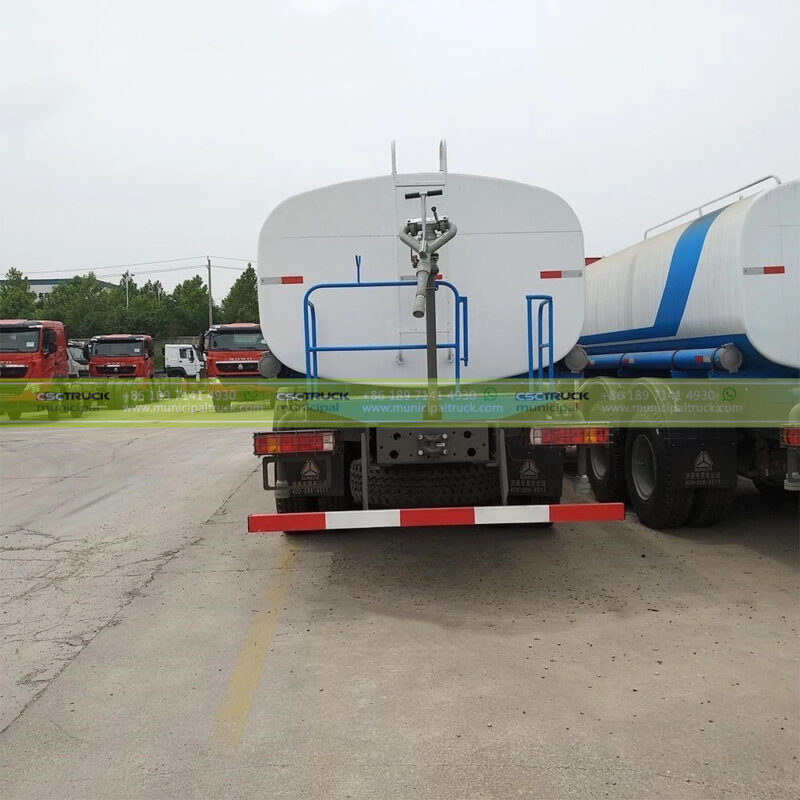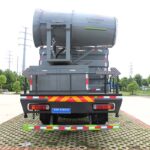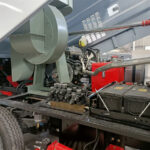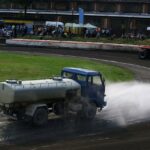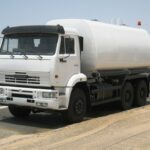The thermometers in downtown Phoenix tick past 119°F (48°C) for the third consecutive day. Pedestrian footpaths radiate stored heat like open furnaces, emergency rooms overflow with heatstroke cases, and buckling rail lines paralyze transit networks. While shade structures and green roofs offer long-term mitigation, they falter against immediate, lethal heat domes. In this battle for urban survivability, municipal fleets deploy an unexpected frontline defender: the water sprinkler truck. Often misperceived as mere dust suppressors, these systems are undergoing a radical reinvention as critical urban heat management infrastructure. Their activation marks the threshold where climate adaptation shifts from planning to life-saving intervention.
The Urban Furnace: Why Cities Amplify Heat Risks
Urban Heat Islands (UHIs) intensify temperatures by 5–12°F (3–7°C) over rural areas through three compounding mechanisms:
- Thermal Mass Absorption: Asphalt and concrete store 95% of solar radiation, re-radiating it overnight.
- Anthropogenic Heat: Vehicle exhaust, AC units, and industrial processes add 20–50W/m² of thermal energy.
- Evapotranspiration Deficit: Impervious surfaces reduce natural cooling from soil moisture and plants.
When humidity climbs above 60%, the human body’s evaporative cooling fails—a lethal convergence measured by wet-bulb temperature. At WBGT 90°F (32°C), outdoor exertion becomes hazardous; at 95°F (35°C), it’s potentially fatal. Traditional cooling centers cannot shield citizens during transit or outdoor labor. This is where mobile evaporative cooling via sprinkler trucks becomes non-negotiable.
Critical Activation Thresholds: When Sprinkler Trucks Transition from Convenient to Essential
1. Persistent Extreme Heat Events (≥3 Days Above 95°F/35°C)
Prolonged heat exhausts biological coping mechanisms and overloads power grids. Sprinkler trucks mitigate microclimates in high-risk zones:
Example: Los Angeles deploys 45 trucks along transit corridors when temperatures exceed 100°F (38°C) for 72+ hours, reducing pavement temps by 25°F (14°C) at pedestrian level.
2. Vulnerable Infrastructure Failure Points
Critical systems demand thermal intervention:
- Transit Rails: Spraying prevents steel expansion-induced buckling (threshold: 86°F/30°C rail temp).
- Bridge Expansion Joints: Cooling preserves structural integrity during thermal swelling.
- Power Substations: Mist systems prevent transformer overload shutdowns.
3. High-Density Public Events During Heatwaves
Festivals, protests, or transit hubs concentrate heat-vulnerable populations. Mobile cooling avoids mass casualties.
4. Wildfire-Urban Interface Zones
Pre-wetting structures and roadside vegetation creates defensible space during fire weather outbreaks.
The Physics of Relief: How Strategic Water Application Lowers Ambient Heat
Evaporative cooling leverages water’s latent heat of vaporization—each gram absorbs 2,260 joules as it transitions from liquid to vapor. Sprinkler trucks optimize this through:
1. Micron-Sized Droplet Engineering
High-pressure nozzles generate droplets ≤50 microns, maximizing surface area for rapid vaporization without runoff. This cools air masses 5x faster than conventional irrigation.
2. Solar Reflectance Amplification
Wetting dark asphalt increases its albedo from 0.05–0.10 to 0.30–0.40, instantly slashing radiant heat emission.
3. Convective Heat Transfer Disruption
Water curtains interrupt ground-to-air heat convection, creating localized cool zones downwind.
Operational Advantages Over Static Cooling Systems
While misting fans or cool roofs have roles, sprinkler trucks deliver unmatched tactical flexibility:
| Parameter | Fixed Cooling Systems | Water Sprinkler Trucks |
|---|---|---|
| Response Time | Hours-days (installation) | <30 minutes deployment |
| Coverage Mobility | Fixed 10–50m radius | Dynamic corridor coverage |
| Water Efficiency | 20–40% evaporation loss | >90% evaporation rate |
| Multi-Threat Response | Single-function | Heat/fire/dust integration |
- Labor Optimization: One operator serves 15x the area of ground crews installing shade tents.
- Adaptive Scheduling: Nocturnal operation exploits lower humidity for enhanced cooling efficiency.
- Emergency Access: Reaches areas inaccessible to fixed infrastructure (collapsed bridges, disaster zones).
Engineering the Modern Heat Mitigation Vehicle
Today’s sprinkler trucks are purpose-built climate tools, far surpassing agricultural tankers:
1. Precision Delivery Systems
- GPS-Guided Nozzle Arrays: Adjust spray patterns based on real-time wind speed/direction data.
- Zone-Specific Flow Control: Targets sidewalks without wasting water on vehicle lanes.
- Variable Pressure Pumps (100–500 PSI): Optimizes droplet size for humidity levels.
2. Integrated Water Intelligence
- Onboard Filtration: Enables greywater or non-potable source usage.
- Flow Meters & Telemetry: Tracks real-time evaporation rates and water conservation metrics.
- Solar-Powered Operations: Roof PV panels drive auxiliary systems, reducing engine idling.
3. Safety-Enhanced Chassis Design
- Collision Avoidance Systems: LiDAR and cameras prevent accidents during low-visibility mist operations.
- Thermal Insulation: Protects water tanks from pre-heating in transit.
Beyond Cooling: Co-Benefits Driving Municipal ROI
Strategic sprinkler deployment generates cascading value:
Public Health Preservation
Lowering wet-bulb temperatures by 7°F (4°C) reduces heat-related mortality by 25–40% in vulnerable populations (elderly, unhoused). Cities like Melbourne link sprinkler corridors to ambulance call reductions.
Infrastructure Longevity
Regular cooling extends asphalt lifespan by 3–5 years by reducing thermal oxidation and rutting. Rail buckling incidents drop >80% with pre-emptive spraying.
Air Quality Synergies
Combined with professional sweeper trucks, sprinklers suppress PM2.5/PM10 during dust storms, creating cleaner thermal relief zones.
Economic Continuity
Preventing heat-induced rail/bridge failures avoids traffic disruption costs exceeding $500,000/hour in major metros.
Integrating Heat Mitigation into Holistic Municipal Fleet Strategy
Water sprinkler trucks are not standalone assets—they’re climate nodes in an interconnected resilience network. While road sweeper trucks maintain surface friction during dust storms, and specialized cooler trucks target micro-zones, the sprinkler’s strength lies in corridor-scale intervention. Forward-thinking agencies synchronize deployments using predictive analytics, activating fleets when satellite data forecasts critical wet-bulb thresholds.
For cities prioritizing adaptive capacity, modular platforms like CSCTRUCK Municipal offer transformative versatility. Its heavy-duty chassis supports rapid interchange between sprinkler bodies for heat crises, sewer jetters for storm prep, or regenerative air sweepers for air quality management—all managed through unified telematics. Imagine a single truck deploying heat-relief sprinklers during a July heatwave, switching to a jet/vac module for August hurricane drain clearance, then adopting a compactor body for autumn leaf collection. The Municipal’s integrated hydraulic architecture delivers the 60 GPM flow rates demanded by high-efficiency cooling, while its emissions-compliant engine meets stringent urban air quality standards. As climate volatility intensifies, the sprinkler truck evolves from seasonal accessory to core resilience infrastructure—a mobile bulwark against urban hyperthermia. The shimmer of evaporating mist along a sun-blasted avenue isn’t just water meeting air; it’s the visible signature of a city actively refusing to succumb to its own accumulated heat.
